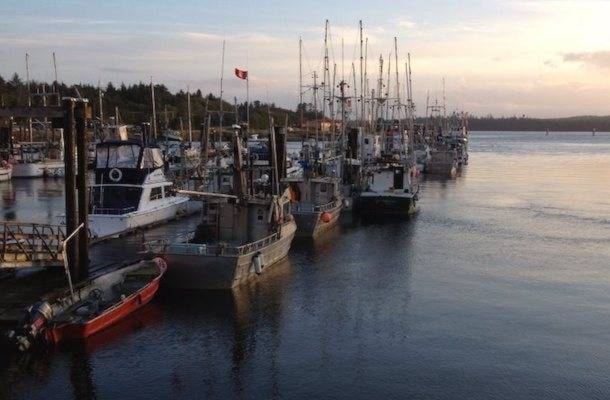Of all the eddies in all the world, why did the world’s largest ocean fertilization experiment happen in one off Haida Gwaii?
That is one question in a new study of the 2012 experiment done by the Haida Salmon Restoration Corporation with Old Massett support.
But it looks more deeply at a second question, one lead author Kate Gannon hopes future policymakers will consider:
What viewpoints shaped the very divided ways people thought about the experiment?
Now a climate change adaptation researcher at the London School of Economics, Gannon says that back in 2012, the HSRC ocean fertilization project came as an unexpected first.
“Geoengineering wasn’t a thing that was being done in any real-world sense at all,” she said. A few smaller-scale ocean fertilization experiments had been done, and debated, but interest in real-world tests had largely faded.
“Scientists were talking about what it might look like, and it really only existed behind the doors of conference rooms.”
That changed over six days in the summer of 2012, when crews from the HSRC set out from Masset on the Ocean Pearl and poured 120 tonnes of iron dust into a swirling eddy in the international waters west of Haida Gwaii.
The goal was to seed a widespread plankton bloom that would restore local salmon and also capture greenhouse gases. Eventually, supporters hoped to continue fertilizing and sell enough carbon credits that Old Massett would make good on the $2.5 million that members voted to spend on financing the HSRC.
Flashback to backlash
What happened next grabbed headlines around the world, as islanders well know.
Canada’s environment minister called the experiment “rogue science” and launched a legal investigation, one that has not led to charges.
Hereditary and elected Haida leaders said such projects pose “unacceptable risks to the marine environment.” The United Nations maritime body called for tighter regulations.
Then the HSRC itself was split. HSRC directors voted to remove Russ George, formerly the chief scientist, accusing him of falsely claiming to have a physics degree and expertise on iron fertilization, and also failing to share methods for verifying how much greenhouse gas was captured by a plankton bloom.
Finally, there were fish. Pink salmon returns hit record highs in Alaska and northern B.C. waters in the fall of 2013.
George credited the experiment, but his replacement at the HSRC was more cautious, saying they had no evidence of a direct link. Besides a draft conference paper on some underwater glider data and a NASA satellite study showing the size of the plankton bloom, the now inactive HSRC lists no peer-reviewed science papers about the 2012 experiment on its website. Plans for more fertilizations were never carried out.
A promising idea
Gannon came to Haida Gwaii in 2013 and 2014, after some of the dust had settled.
Her research included interviews with over 40 people who had strong interest in the experiment, and she began by looking at what motivated many people in Old Massett to support it.
“I found a really powerful story about a community with an incredible history of environmental stewardship, and one that’s really on the front lines of climate change,” she said.
“Add to that, it’s one that’s really had to fight for every inch of its autonomy in post-colonial Canada.”
In a place where the environment is degraded and jobs are scarce, Gannon found the HSRC offered a way to restore a culturally treasured resource while also providing a new economic engine that was independent of fishing, logging, or the government of Canada.
Three views
Gannon originally planned to stick with conventional interviews and focus groups for her research on Haida Gwaii, but that soon changed.
“I just realized that this topic is way too sensitive to bring groups of people together and ask them to debate it in a shared setting,” she said.
Still, Gannon wanted to understand the deeper attitudes that shaped how people thought about the project, and that meant asking people to at least consider attitudes with which they fundamentally disagree.
So she decided to use a kind of opinion research called Q-methodology or “Q-sort.” Basically, she asked 26 people to rank a series of statements about ocean fertilization according to how much they agreed or disagreed with each one.
One statement said, “We won’t know if ocean fertilization will work until we try.” Another said “Ocean fertilization is humans trying to play God.”
After crunching the numbers, Gannon found, as expected, that people were highly divided.
But there were actually three main points of view.
One is that ocean fertilization is “playing God.” It messes up a natural order.
Another is that science will settle the question. Test it and find out.
A third is that the ocean is too complex and poorly understood to try fertilization now. Wait.
In her paper, Gannon said it’s especially important to understand the underlying attitudes and particular politics that were at play in the case of the Haida Salmon Restoration Corporation because in the wake of the Paris climate agreement, interest in geoengineering is once again on the rise.
“The research in Haida Gwaii tells the world that in fact, geoengineering is likely always to be contested,” she said.
“It’s engaging with these multiple and very diverse ways that humans understand the world and humans’ management role within it.”
